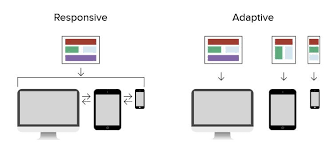In the rapidly evolving digital landscape of 2025, user expectations have shifted towards more personalized and context-aware experiences. Adaptive User Interfaces (AUI) have emerged as a pivotal trend, enabling applications to modify their layout, content, and functionality in real-time based on individual user behaviors, preferences, and environmental factors.
Understanding Adaptive User Interfaces
An Adaptive User Interface is a system that dynamically alters its presentation and interaction mechanisms to suit the unique needs of each user. Unlike static interfaces, AUIs leverage data analytics, machine learning, and user feedback to tailor experiences, ensuring relevance and efficiency.
Key characteristics include:
- Context Awareness: Recognizing factors like device type, location, and time to adjust interface elements accordingly.
- Behavioral Adaptation: Monitoring user interactions to predict and present preferred functionalities.
- Personalization: Customizing content and layout based on user preferences and past behaviors.
The Rise of AUI in 2025
Several factors have contributed to the prominence of AUIs:
- Diverse Device Ecosystem: With users accessing applications across smartphones, tablets, wearables, and desktops, interfaces must adapt to varying screen sizes and input methods.
- User-Centric Design Philosophy: There’s a growing emphasis on creating experiences that resonate personally with users, enhancing satisfaction and engagement.
- Advancements in AI and Machine Learning: These technologies have made it feasible to analyze vast amounts of user data in real-time, facilitating dynamic interface adjustments.
Implementing Adaptive UI: Best Practices

To effectively design and deploy AUIs:
- Prioritize User Privacy: Ensure transparency in data collection and provide users with control over their data.
- Maintain Consistency: While adapting interfaces, retain core design elements to avoid disorienting users.
- Test Extensively: Conduct usability testing across diverse user groups to identify potential challenges and areas of improvement.
- Provide Override Options: Allow users to customize or revert adaptations to suit their preferences.
Challenges in Adaptive UI Design
While AUIs offer numerous benefits, they also present challenges:
- Complexity in Development: Designing interfaces that adapt seamlessly requires sophisticated algorithms and thorough planning.
- Potential for Over-Personalization: Excessive adaptation might lead to users missing out on features or content they might find valuable.
- Accessibility Concerns: Ensuring that adaptive changes don’t hinder accessibility for users with disabilities is crucial.
The Future of Adaptive User Interfaces
Looking ahead, AUIs are poised to become more intuitive and proactive. With the integration of technologies like augmented reality (AR) and voice recognition, interfaces will not only adapt visually but also in terms of interaction modalities, offering users a more immersive and responsive experience.
FAQs
1. What distinguishes Adaptive UI from Responsive UI?
Adaptive UI changes based on user behavior and context, while Responsive UI adjusts layout based on device screen size.
2. Are Adaptive UIs suitable for all applications?
While beneficial for many, the implementation should be evaluated based on the application’s purpose and user base.
3. How does Adaptive UI impact performance?
If not optimized, dynamic adjustments can strain system resources; hence, efficient coding practices are essential.
4. Can Adaptive UI enhance accessibility?
Yes, by tailoring interfaces to individual needs, AUIs can improve accessibility, provided they adhere to inclusive design principles.
5. What tools assist in developing Adaptive UIs?
Frameworks like React Native and Flutter, combined with AI and analytics tools, facilitate the creation of AUIs.
Leave a Reply